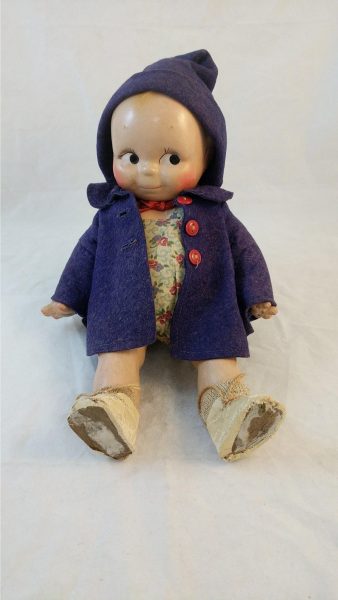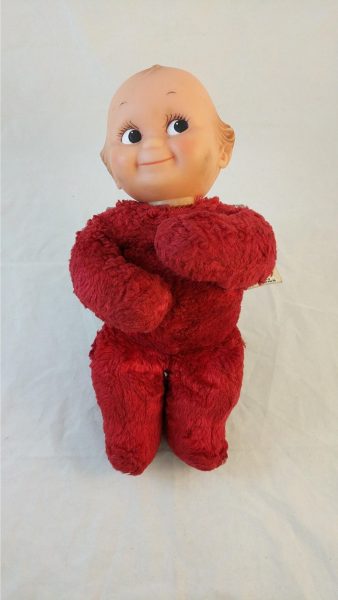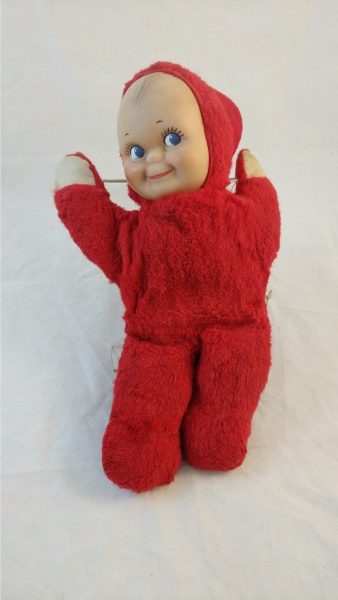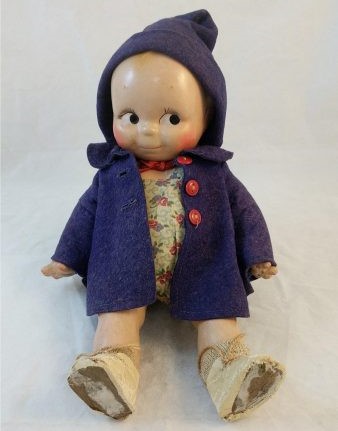Kewpie dolls are the creation of Rose O’Neill, a child prodigy, a suffragette, and a self-trained fine artist who was the highest-paid female commercial illustrator of the early 20th century. O’Neill created Kewpies in 1909, when they first appeared in her illustration for a popular women’s magazine. With their nude, sexless, cherubic bodies; tiny wings; small tufts of hair; large D-shaped eyes; tiny, expressive eyebrows; round, rosy cheeks; and simple smile, Kewpies were an angelic combination of a baby and a cupid, but also inspired by elves, pixies, and fairies. O’Neill continued to illustrate Kewpies in published stories, where they performed good deeds to cheer up children and to help people in need.
The production of the Kewpie doll began when O’Neill commissioned artist Joseph Kallus to create a three-dimensional Kewpie in plaster. She then approached a German manufacturer to create dolls in porcelain bisque in 1912, and Kewpie dolls were subsequently produced in composition materials. Soft-bodied “Kuddle Kewpies” appeared in the 1920s, and hard plastic Kewpie dolls were produced in the 1940s. Throughout this time, the Kewpie character had become widly popular around the world and was being produced in many different forms, including as carnival toy prizes, in printed designs on fabrics and other materials, and even as chocolates. Kewpies were the best-known, best-loved cartoon character in American pop culture until the advent of Mickey Mouse.

By Rose O’Neill
Early 20th century
American Midwest Ozarks culture
Composition, paper, synthetic fibers, and pigments
L. 17.8 cm x W. 10.2 cm x H. 33 cm
Bonniebrook collection #2017.1

Designed by Rose O’Neill
Early 20th century
American Midwest Ozarks culture
Synthetic polymer, rubber, synthetic fibers, and pigments
L. 7.6 cm x W. 7.6 cm x H. 30.5 cm
Bonniebrook collection #2017.3

Designed by Rose O’Neill
Early 20th century
American Midwest Ozarks culture
Synthetic polymer, rubber, synthetic fibers, and pigments
L. 10.2 cm x W. 5.1 cm x H. 29.2 cm
Bonniebrook collection #2017.2
For more information, you may contact the researcher(s) noted in the title of this exhibit entry, or Dr. Billie Follensbee, the professor of the course, at BillieFollensbee@MissouriState.edu

